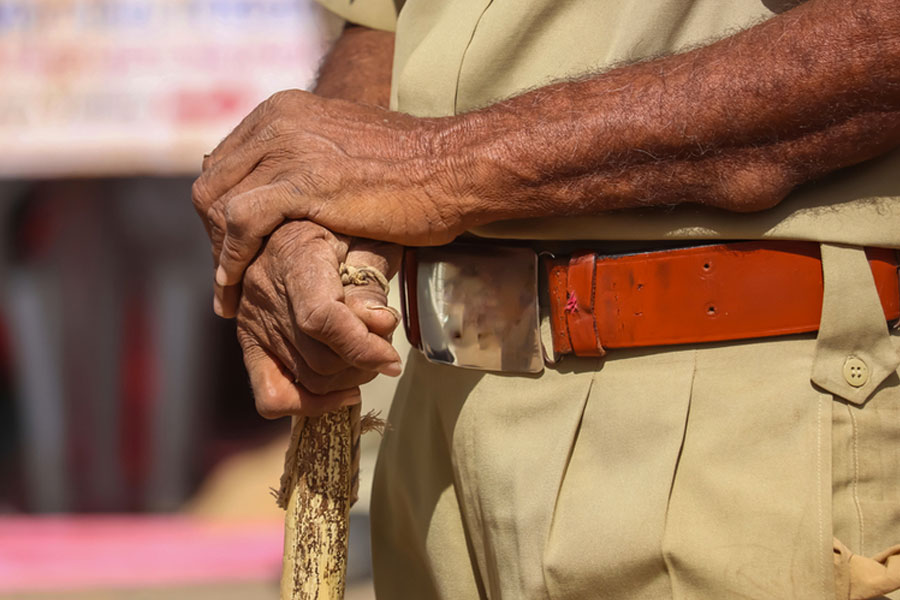 |
| PC’s choice |
Chennai, Aug. 6: Jayalalithaa rarely misses a chance to try and ruffle the feathers of P. Chidambaram. But she has now done something that should iron out the last wrinkle on the starched veshti of her political rival.
The Tamil Nadu chief minister today introduced a bill that will imprison for a year those found guilty of denying persons clad in “veshti (dhoti)” or “any traditional Indian dress” entry into clubs, hotels, theatres and malls.
Not that anyone has barred Chidambaram entry because of his attire. The “veshti law” — officially called the Tamil Nadu Entry into Public Places (Removal of Restriction on Dress) Act, 2014 — came in response to a dhoti-clad high court judge being shut out from a prominent city club last month.
The bill was moved in the Assembly to thumping of desks and it was not lost on many that finally a woman had to stand up to protect the sartorial rights of harried men.
The bill mentions that “some clubs are denying entry to persons wearing dhoti or any Indian traditional dress into public areas under the control of the management on the ground that they are not wearing dress or apparels in keeping with western culture”.
So far, so good. But the bill then enters a territory that is as tricky to negotiate as the dying art of wearing a veshti and carrying it off with elan.
The bill says that “it is the fundamental duty of every citizen to value and preserve the rich heritage of our composite culture…. The restriction for entry into public places on the ground that the dress does not conform to western culture would amount to continuation of the colonial imperialistic attitude”.
That brings up the question how traditional or non-colonial is it to wear a shirt — a western apparel — with a veshti or dhoti.
More often than not, Chidambaram — and many men in southern India — pair veshti with a full-sleeved shirt. Half-sleeved shirts are also common.
So, once the bill is passed and if someone is bent on thread-splitting, the veshti-wearers can be asked whether they are not unwittingly promoting “half-colonialism” or “imperialism of the torso” if they are covering the upper body with a shirt.
The original Tamil traditionalists in ancient times wore a dhoti and threw a towel-like piece of cloth over the upper body. The warm weather did not necessitate a garment like the shirt.
The arrival of long cloth (coarse white cotton fabric) woven locally saw some people switching to stitched semi-shirt — without a collar and loose half sleeves — sometime in the 16th century.
The British influence saw the semi-shirt evolving into a full-fledged shirt. Convenience made the shirt the ideal office wear as the middle class, English-speaking Tamils became the backbone of the British administration.
Gradually the cotton dhoti and khadi shirt became the trademark dress of leaders during the Independence movement. The Carnatic musicians innovated by combining dhotis with long kurtas.
Temple priests still do not wear any upper body cloth while performing puja at temples or in homes. Farmers too prefer to work bare-bodied in their fields.
“Shirt teamed with veshti/dhoti may not be entirely national but it is very traditional in both Tamil Nadu and Kerala…. The shirt was a natural evolution that was assimilated into the Tamil cultural tradition…. It was a choice that sprang from practicality, comfort and facility. When we look at C.V. Raman or Rajagopalachari, they all wore veshti and shirt…,” said Ashoke Viswanathan, a filmmaker who belongs to an Iyer family from Tanjore that migrated to Calcutta in the 1930s.
The evolution of the dhuti ensemble in Bengal also followed more or less the same route.
“In Bengal, till the 19th century, before the colonial influence, the men’s attire was dhuti-fotua-chador.... Think Vidyasagar’s attire.... In the colonial era, the Bangali babu’s attire was the dhuti with shirt, coat and boot. You would see that in many Uttam Kumar movies where we see the decadence of the Bangali babu,” said Sharbari Datta, a menswear fashion designer.
Tapati Guha Thakurta, the director of the Centre for Studies in Social Sciences, said: “Bengalis have had a tendency of fashioning their own formal wear. While Rabindranath Tagore designed a long gown for himself, Rammohun Roy and Prince Dwarkanath were seen wearing a turban and Swami Vivekananda a robe, none of which was historically Bengali.”
All of which tie up in knots terms in the bill such as “Indian traditional” and “colonial imperialistic attitude”, although few have supported the ban on veshti in clubs.
Such threadbare discussions can continue in the high-backed leather chairs of clubs but officials of similar establishments in Tamil Nadu will do well to read the operative part of the bill.
“Violation of the law would lead to the cancellation of the licence granted to the club, association, trust, company or society… also, the person responsible could be punished with imprisonment up to one year and a fine up to Rs 25,000,” according to the bill.
The Tamil Nadu bill lists clubs, hotels, theatres, malls, halls, auditoriums and stadiums as public places.
Justice T. Hari Paranthaman, the judge who was denied entry by the Tamil Nadu Cricket Association Club on July 11 for wearing a dhoti, described the bill as “a timely move”.
Asked if his next visit to a club would be in a dhoti, the judge said: “Let someone invite me first.”









